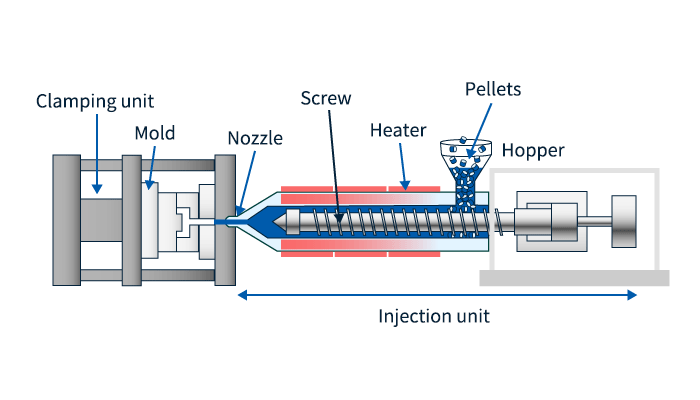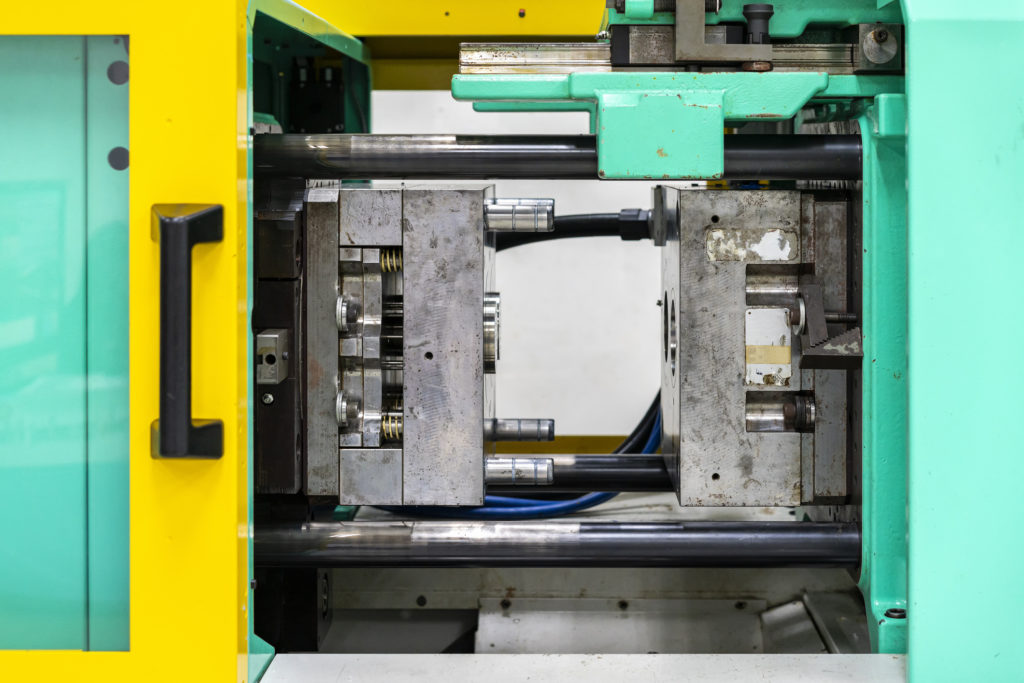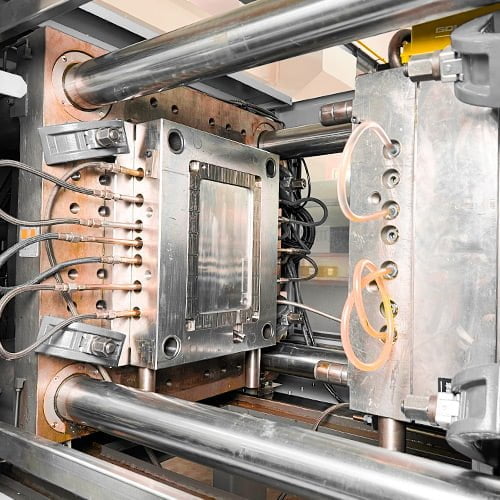Discovering the Future of Plastic Injection Molding in the Production Sector
Discovering the Future of Plastic Injection Molding in the Production Sector
Blog Article
Recognizing the Fundamentals of Plastic Injection Molding Processes
Plastic injection molding offers as a cornerstone of modern production, providing a methodical strategy to generating complicated components with accuracy. Discovering these crucial components could expose how even small modifications can lead to significant improvements in manufacturing results, increasing questions about the capacity for innovation in this established process.
What Is Plastic Shot Molding?
Plastic injection molding is an extensively used production process that transforms thermosetting and thermoplastic materials right into precise and complicated forms. This method is favored for its capacity to produce high quantities of the same components with extraordinary accuracy, making it a vital method in numerous industries, including auto, consumer items, and medical gadgets.
The procedure includes thawing the chosen plastic material and infusing it right into a mold and mildew under high pressure. The mold, developed to the specifications of the wanted component, permits the molten plastic to take shape as it strengthens and cools. Once the material has set, the mold and mildew is opened, and the completed element is expelled.
Plastic shot molding supplies numerous advantages, including lowered waste, consistency in production, and the capability to include complex layouts that might be testing with various other manufacturing approaches. Furthermore, it sustains a wide variety of products, each supplying special buildings that can be customized for specific applications. As industries remain to innovate, plastic shot molding stays at the leading edge, making it possible for the growth of advanced products that meet evolving customer demands.
The Injection Molding Refine
The shot molding process is an advanced strategy that includes a number of key phases to generate high-grade plastic parts. Originally, plastic pellets are fed into a heated barrel where they are merged a thick fluid. This molten plastic is then infused under high stress into a precision-engineered mold and mildew, which forms the product right into the wanted type.
Once the mold is filled, the plastic is permitted to strengthen and cool down, taking the shape of the mold and mildew tooth cavity. Air conditioning time is crucial, as it influences the cycle time and the last homes of the molded part. After adequate cooling, the mold and mildew opens, and the ended up component is expelled utilizing ejector pins.

Materials Made Use Of in Shot Molding
Numerous materials can be utilized in the shot molding procedure, each offering special properties that deal with specific applications. One of the most generally made use of materials include thermoplastics, thermosetting plastics, and elastomers.

Thermosetting plastics, like epoxy and phenolic materials, undertake a chemical modification throughout the treating procedure, causing an inflexible, inflexible structure. These products are excellent for applications requiring high warmth resistance and architectural honesty, frequently utilized in automotive parts and electric insulators.
Elastomers, including silicone and rubber-based materials, give versatility and strength. Their distinct homes make them appropriate for applications that demand elasticity, such as seals and gaskets.
In addition, specialized materials like bio-based plastics and compounds are getting grip for their ecological benefits and enhanced efficiency features, broadening the scope of shot molding applications in numerous sectors. Recognizing the properties of these products is critical for picking the suitable type for specific jobs.
Advantages of Injection Molding
Injection molding stands out as an extremely reliable production procedure that uses numerous benefits for creating intricate parts with precision. Among the most significant benefits is the capability to produce detailed styles that would certainly be tough or difficult to attain with various other methods (Plastic Injection Molding). The procedure permits limited resistances and in-depth functions, guaranteeing high-grade parts
In addition, injection molding is understood for its fast production capacities, making it an optimal selection for high-volume production. As soon as the mold and mildew is created, parts can be generated rapidly, lowering preparations and boosting overall performance. This performance not just reduces production expenses however likewise gives an one-upmanship on the market.
The adaptability of products used in injection molding further enhances its charm. A variety of thermoplastics and thermosetting polymers can be employed, allowing makers to choose products that finest fulfill their specific needs, consisting of strength, flexibility, and warm resistance.
Furthermore, the procedure minimizes waste, as excess material can often be reused and reused. This sustainability aspect adds to a reduced ecological influence, making shot molding an accountable manufacturing choice. Overall, the advantages of Click This Link injection molding make it a preferred method for lots of markets.
Elements Affecting Item Top Quality
While many variables can affect item quality in injection molding, comprehending these components is vital for accomplishing ideal outcomes. Trick facets consist of material option, processing parameters, and mold and mildew design.
Material option plays an important role, as various polymers show special residential or commercial properties that impact flowability, stamina, and thermal stability. Insufficient product option can cause defects such as warping or incomplete dental filling.
Handling specifications, consisting of cycle, stress, and temperature level time, need to be thoroughly regulated. Variations in these settings can cause disparities in component dimensions and surface finish. For circumstances, excessively high temperature levels may cause site degradation of the polymer, while poor pressure can result in brief shots.
Mold style is equally important, as it establishes the circulation of the molten plastic and the cooling procedure. Improperly created molds might lead to unequal air conditioning rates, leading to residual tensions and dimensional mistakes.

Conclusion
In conclusion, plastic shot molding offers as an important production process that makes it possible for the efficient manufacturing of high-quality parts. Proficiency of the injection molding procedure, including the understanding of materials and the impact of different elements on product high quality, is essential for achieving ideal outcomes. The benefits of this method, such as cost-effectiveness and layout versatility, further emphasize its YOURURL.com significance across numerous industries, solidifying its standing as a preferred option for high-volume manufacturing.
Plastic injection molding offers as a foundation of contemporary manufacturing, offering a systematic method to creating intricate components with accuracy.Plastic injection molding offers numerous benefits, including lowered waste, consistency in manufacturing, and the capacity to incorporate elaborate layouts that may be testing with other manufacturing methods (Plastic Injection Molding). As markets proceed to innovate, plastic shot molding remains at the center, making it possible for the advancement of innovative products that satisfy evolving consumer needs
The injection molding procedure is an advanced method that involves several key phases to produce top quality plastic parts.In final thought, plastic shot molding offers as a vital production procedure that makes it possible for the reliable manufacturing of premium elements.
Report this page